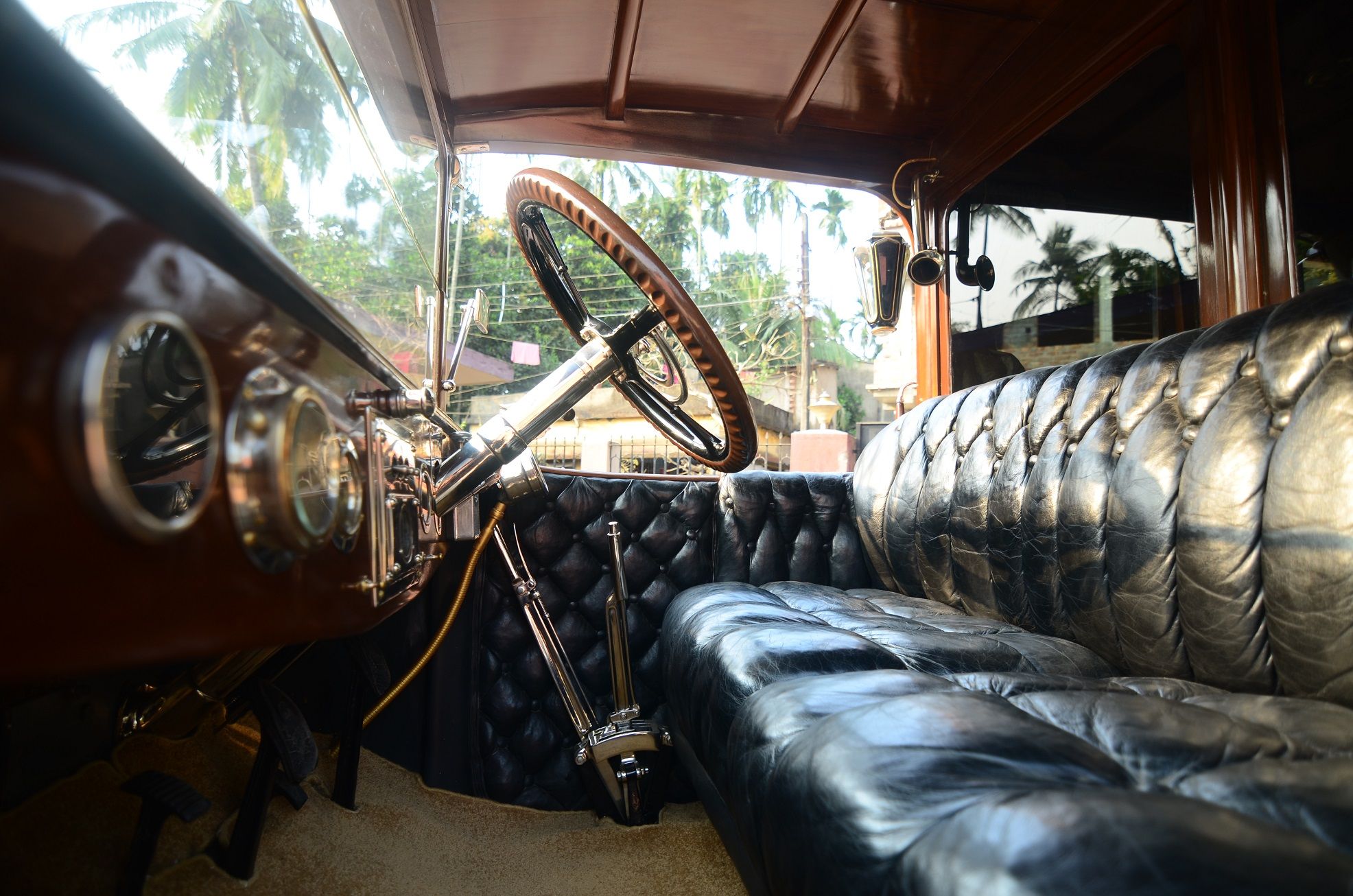This Veteran Car From England’s Biggest Carmaker Won At India’s Premier Concours d’Elègance
Images: Shreya Goswami
The Wolseley brand first appeared on sheep-shearing machines, then on a three-wheeled automobile built by Herbert Austin, who was the technical director of the firm. From 1901 to 1911, the cars were sold with the Wolseley Siddeley badging as John Davenport Siddeley replaced Herbert Austin, when the latter resigned.

When Siddeley moved on to Deasy Motor Company, Wolseley went back to using just the Wolseley moniker once again.

With an extensive eight-car model range Wolseley became the leading British carmaker by 1914. After the war, the excessively wide model range put the firm into financial difficulties and in 1927 William Morris bought Wolseley, integrating it into Morris Motors Limited in 1935.

Conventional, but always with a touch of understated luxury, Wolseley became a favourite of the English police, as well as becoming famous for its backlit logo and the shield-shaped grille.

With the many mergers and upheavals of the British automobile industry during the 1970s, Wolseley as a brand disappeared in 1975 when the Wolseley Six and the very short-lived Wolseley Saloon’s production came to an end. (The marque, like MG, is currently owned by the Chinese carmaker SAIC).

Wolseley’s success during the dawn of the automotive era, specifically so in the UK, was reflected in the success of the brand in the Indian marketplace too. And even if it is not all that clear as to how many Wolseleys came into India, the number of survivors from the very early years, specifically Edwardian era (1905-1918) models, is fairly impressive.

Most of them are the bigger and luxuriously appointed cars that Wolseley had become famous for, and one of the finest examples of that genre is the car featured here, a Wolseley 24/30 from 1915 or so.

The Wolseley 24/30 was a car for the “upper middle class” in good ole Blighty, but in India it was the very rich who bought such a car. A smaller version of the Wolseley 30/40, the 24/30 was launched in 1910, and was produced until 1915, with war interrupting production.

After the end of the First World War, Wolseley resumed production of the 24/30 in 1919, and the model remained on offer until the end of production in the early 1920s, although very few were actually made during the last few years.

Featuring a straight-six of 5016cc that developed 30bhp (with taxable horsepower rated at 24), the 24/30 was very capacious despite an overall length of less than five metres.

Wolseley Register’s Andy Plummer believes that the car we are featuring “was probably ordered in 1915.” He wrote to current owner Shrivardhan Kanoria mentioning: “You are in good company, as two 24/30s - cars 21462 and 21484, which must have been made at a similar time as yours - went to members of the British royal family. Although a 1915 car, yours was not delivered until 1917, and its first owner was the Earl of Ronaldshay, the Governor of Bengal.”

Plummer went on to clarify that, “there are 12 other surviving 24/30s as far as we are aware. I am currently rebuilding a 24/30 chassis. Five of the surviving cars were discovered in a barn in Canada in the 1960s by Charles Neville. Apart from a 1922 car which we know very little about, yours is the 'newest’ 24/30 to have survived.”
Wolseley historian Anders Clausager added: "The engine number is original. The car was delivered from Wolseley on 1 September 1917 in chassis form and was shipped to Dykes & Co in Calcutta. They were coachbuilders, so it is likely that they built the body there in India. It is also possible that the chassis was built in 1916 or even 1915. 1,380 cars of the 24/30hp type were built 1910-17, and another 305 built 1919-24.”
Shrivardhan explains that his father, the late Shashi Kanoria, found this car in an ashram in Assam in the early 1980s. Soon after acquiring a very complete car, he had it restored. The car participated several times in Kolkata’s famous The Statesman Vintage Car Rally. And then it went into hibernation for a few years.

It was only in 2016 that Shrivardhan Kanoria decided to resuscitate the grand old dame once again. And that he did with real aplomb, so much so that the car won the Best of Show at the 2017 edition of the Cartier concours d’elègance in Hyderabad.
Comments
Sign in or become a deRivaz & Ives member to join the conversation.
Just enter your email below to get a log in link.
